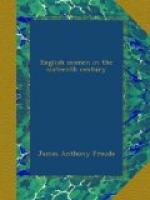Stukely was a specimen of the foolish sort of the young Devonshire men; Hawkins was exactly his opposite. He stuck to business, avoided politics, traded with Spanish ports without offending the Holy Office, and formed intimacies and connections with the Canary Islands especially, where it was said ’he grew much in love and favour with the people.’
At the Canaries he naturally heard much about the West Indies. He was adventurous. His Canaries friends told him that negroes were great merchandise in the Spanish settlements in Espanola, and he himself was intimately acquainted with the Guinea coast, and knew how easily such a cargo could be obtained.
We know to what the slave trade grew. We have all learnt to repent of the share which England had in it, and to abhor everyone whose hands were stained by contact with so accursed a business. All that may be taken for granted; but we must look at the matter as it would have been represented at the Canaries to Hawkins himself.
The Carib races whom the Spaniards found in Cuba and St. Domingo had withered before them as if struck by a blight. Many died under the lash of the Spanish overseers; many, perhaps the most, from the mysterious causes which have made the presence of civilisation so fatal to the Red Indian, the Australian, and the Maori. It is with men as it is with animals. The races which consent to be domesticated prosper and multiply. Those which cannot live without freedom pine like caged eagles or disappear like the buffaloes of the prairies.




